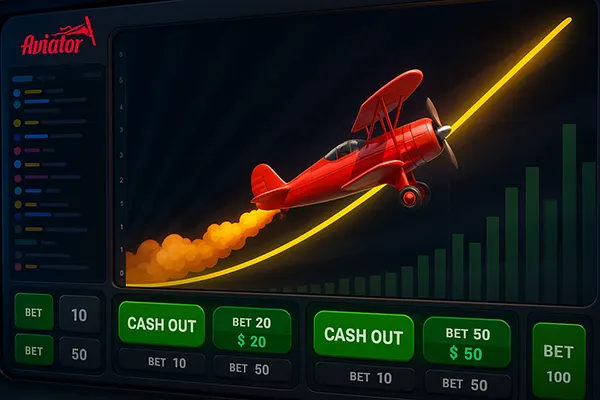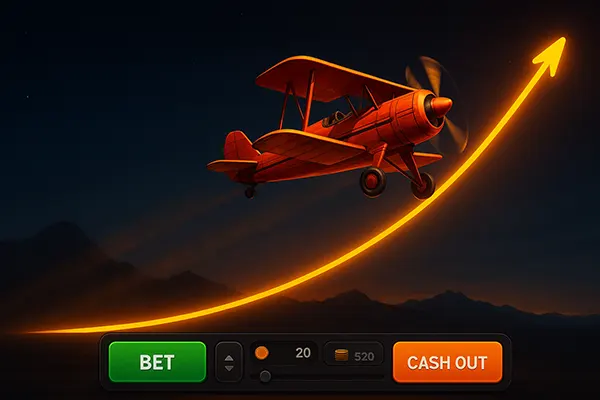
Crash and Aviator Games: Evolution from Mechanics to Themes in Mid-2025
Crash-style games, including the widely recognised Aviator, have established themselves as one of the fastest-growing categories in online interactive entertainment. By mid-2025, these games have evolved far beyond their original minimalist mechanics, integrating more sophisticated themes, social features, and risk-management tools. Their popularity stems from a simple yet high-stakes concept — players place a wager, watch a multiplier climb, and decide when to cash out before it crashes. Over time, developers have refined this model to cater to diverse player preferences, regional regulations, and the increasing demand for transparency and fairness.
From Simple Multipliers to Complex Game Mechanics
The earliest versions of crash games relied on a basic exponential growth curve, where the main interaction was the timing of the cash-out. While engaging, this simplicity had its limits. By 2025, developers have expanded mechanics to include variable volatility modes, side bets, and bonus rounds that activate under certain multiplier thresholds. These features introduce strategic depth, allowing experienced players to tailor gameplay to their risk tolerance and session goals.
Modern crash games also use provably fair algorithms, ensuring that each round’s outcome can be independently verified. This cryptographic transparency has become a key selling point, particularly in regulated markets where player trust is paramount. It also allows operators to meet compliance standards without sacrificing speed or excitement, even when handling large volumes of simultaneous players.
Additional mechanics such as auto-cash-out, split bets, and round replays have also transformed the user experience. These tools not only support responsible gaming practices but also make sessions more dynamic by letting participants automate strategies while monitoring the game flow in real time.
Integration of Social and Competitive Elements
One of the defining changes in crash games’ mechanics has been the integration of live chat, leaderboards, and multiplayer tournaments. In mid-2025, nearly all top-tier crash titles include a persistent social layer where players can interact, comment on wins, and even collaborate on betting patterns. This has shifted the genre from an isolated betting activity to a shared entertainment experience.
Leaderboards and seasonal competitions keep engagement levels high, rewarding not only big wins but also consistent play or creative strategies. Developers have recognised that sustained retention requires more than just chance-based outcomes; competitive goals encourage players to return regularly, even if the immediate monetary rewards vary.
Collaborative and competitive play has also influenced the way developers structure in-game events. Limited-time challenges and themed competitions now align with global or cultural events, creating a sense of relevance and variety throughout the year.
Thematic Expansion and Visual Innovation
When crash games first appeared, most adopted a minimalistic look — often just a rising line or an aircraft moving across the screen. By 2025, thematic diversity has become a central design principle. Aviator may still use its flight motif, but newer titles explore space travel, treasure hunts, cyberpunk chases, and even sports-inspired climbs. This thematic variety helps reach audiences with different aesthetic preferences and cultural backgrounds.
Advancements in 3D rendering and animation have made it possible to integrate cinematic sequences without slowing down gameplay. Backgrounds and animations now respond dynamically to multiplier progress, with visual cues signalling risk points or milestone achievements. These features make the experience more immersive without distracting from the core mechanic.
Sound design has also advanced significantly. Developers employ adaptive audio that changes tempo or intensity as the multiplier increases, reinforcing the tension and excitement of each round. This synergy between sound and visuals keeps players engaged and enhances memorability, which is crucial in a competitive market.
Cross-Genre Influences on Themes
The success of crash games has inspired crossovers with other popular genres, such as role-playing games (RPGs) and arcade racing. Some titles introduce progression systems where players unlock new environments, aircraft, or avatars by reaching specific milestones or participating in seasonal events. This fusion brings long-term goals into a format traditionally focused on short sessions.
Collaboration with known brands has become more common. In 2025, licensed themes from music, sports, and entertainment franchises appear in crash-style releases, aiming to capture niche audiences while offering familiar visual and audio cues. This approach reduces the learning curve for newcomers and enhances brand loyalty.
These cross-genre integrations also open up monetisation beyond direct gameplay, as cosmetics, skins, and themed add-ons can be sold alongside the core game. However, the industry has had to balance these revenue opportunities with responsible gaming frameworks to avoid excessive spending pressures.

Responsible Gaming and Regulatory Adaptations
With the rapid growth of crash games, regulatory bodies have increased scrutiny over fairness, transparency, and player protection. By 2025, most reputable operators include built-in responsible gaming tools such as session limits, wager caps, and reality checks within crash game interfaces. These safeguards are now standard in licensed markets and are often audited by independent agencies.
Geolocation-based compliance has also influenced the design of crash titles. Certain jurisdictions require modifications to volatility or prize structures, leading developers to create modular game builds that adapt automatically to the player’s location. This ensures compliance without fragmenting the user base or introducing confusion.
The industry’s focus on responsible play has also spurred educational initiatives. Many crash games now include accessible guides, tutorials, and interactive demos that teach mechanics without risking real funds. This not only aligns with regulatory expectations but also builds trust with newer audiences who may be unfamiliar with the genre.
Future Directions for Crash-Style Games
Looking ahead, crash games are expected to adopt more advanced predictive analytics, giving players personalised insights into their betting patterns. This data-driven approach could help users make informed decisions, promoting sustainable engagement rather than high-risk play. AI-powered assistants might soon offer in-game tips tailored to individual strategies.
Virtual reality (VR) and augmented reality (AR) adaptations are also in early stages of development. These technologies could transform crash games from flat-screen experiences into immersive environments, where players physically move or gesture to control their cash-out actions. Early prototypes suggest strong engagement potential in younger demographics.
Ultimately, the evolution of crash and Aviator-style games reflects a broader trend in interactive entertainment — blending simple, compelling mechanics with thematic richness, social features, and strong regulatory compliance. This balance will be key to sustaining the genre’s relevance in the years ahead.
